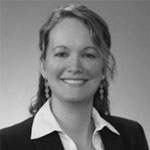Congratulations to the 2021 Tax Transformer Awards Grand Prize Winner!
ConocoPhillips – Lily Shui, Tax Systems Coordinator

Using Corptax BOTS for a Better Night’s Sleep
Challenge
ConocoPhillips had taken the first step toward using a BOT to automate their trial balance import process. They ran into a problem, however. During the monthly close period, a team member had to wake up at 1:30 am to launch the BOT—and again at 4:00 am to review the process for failures and rejects—all to ensure the team started their day with current, accurate data.
And that staff member’s day didn’t end there! Due to a demanding timeline and limited resources, this dedicated employee still worked a full day.
ConocoPhillips decided to take the BOT to the next level!
Solution
Already successfully using CSC Corptax® Provision, ConocoPhillips focused on “finding a way to use the least human intervention possible.”
With virtual assistance from CSC Corptax® Professional Services, ConocoPhillips added Web API and Data Exchange features to their process.
Results
Now, the team uses Data Exchange to instantly and independently launch the import BOT whenever a new source document is uploaded to a shared database.
An import package kicks off 17 post-execution tasks in 15 seconds, including automatic amount posting, adjustments, international computations, and workpaper updates!
This ‘seamless process’ occurs while preparers get invaluable rest, and it gives them complete and current data each morning.
The provision team saves approximately 60 to 90 hours by eliminating manual source data imports, workpaper updates, adjustments, and calculations. Plus, they appreciate having time to spend on value-adding tasks—and getting the rest they need to perform at a higher level.
Congratulations to the 2021 Tax Transformer Awards Finalists!
Brother International Corporation – Tony Daoud, Income Tax Manager
 Using Software Intelligence to Level-up International-through-State Reporting
Using Software Intelligence to Level-up International-through-State Reporting
Challenge
Brother International Corporation’s (BIC) 2020 compliance season revealed inefficiencies the tax team needed to address. They manually updated Form 1118, Schedule H, Part II (interest expense) via User Expense Ratios to reconcile back to an external worksheet. This required:
- Manually updating the expense ratio for interest expense for every change to the domestic calculation
- Manually updating an external Excel spreadsheet, which maintained their Tax Basis Assets with links to other external workpapers
Also, BIC relied on legacy Forms 5471, 8992, and 8993 which required heavy manual intervention to prepare, as well as update, when changes were made to related data. The same could be said of BIC’s process for populating federal M adjustments and Form 4562—the process was manual and unresponsive to change. Without safeguards in place to prevent and detect irregularities caused by human error, BIC faced added risk.
Further, a lack of centralized import capability across all states and entities meant manually entering state apportionment and modifications, also raising the risk of errors.
Solution
CSC Corptax® International Compliance, State Compliance, and Office allow BIC to streamline their 2021 compliance processes. They find the solutions “intuitive, easy to use, and logical” and appreciate the “clean audit trails.”
Results
Now, BIC maintains their Tax Basis Assets in Corptax to work in conjunction with their external workpapers. BIC updates the Tax Basis Assets every year with appropriate M adjustments during domestic compliance preparation. This automatically updates Form 1118, Schedule H, Part II with any changes on the domestic side and eliminates the need to update User Expense Ratios for interest expense.
Using NextGen Forms 5471 and 8992 produces impressive time-savings as the team effortlessly updates them with data already in the system. Similarly, by automating federal M adjustments and Form 4562, BIC reduces risk associated with their former manual process and gets time back to focus on reviews. They also appreciate the ability to easily analyze clean reports and diagnostics. And by performing their complex FDII calculation in NextGen Form 8993, they gain added assurance that their external FDII calculation agrees with the system’s calculated FDII deduction.
Instead of manually entering state modifications on to the return, BIC uses Corptax-provided templates to instantly import modifications and apportionment into the system via Corptax Office. They simply pull down their source data, create a formula to push it into state templates, and import to Corptax at the push of a button. The tool automatically pulls all prior-year modifications across all states and entities and provides a comparison to ensure consistency and completeness.
All told, this 4-person tax team estimates they save:
- 60 hours by automating modifications and apportionment data
- 60 hours by utilizing NextGen Forms 5471, 8992, and 8993
- 20 hours by automating federal M adjustments, M-3 amounts, and Form 4562
FirstEnergy Corp – Deidra Rudd, Manager, Federal Compliance
 Pain to Progress: Automation Accelerates Federal Adjustments and Reviews
Pain to Progress: Automation Accelerates Federal Adjustments and Reviews
Challenge
FirstEnergy tracked tax basis for more than 20 entities using Excel spreadsheets developed by an outside consultant. The spreadsheets contained numerous links and formulas requiring significant manual input. Tax team members lost valuable time posting and reposting data and adjustments and re-running the tax basis balance sheet—only to find data had posted incorrectly.
FirstEnergy also spent considerable time each year calculating the change in balance for various M adjustments. They had to download both prior and current year trial balances and run a manual comparison in their workpapers, analyzing timing differences one at a time.
Further, with multiple staff members preparing workpapers, FirstEnergy struggled to maintain an orderly and consistent approach, resulting in difficult and time-consuming reviews and even more manual entry.
Solution
FirstEnergy uses CSC Corptax® enhancements such as virtual account to simplify the closing of net income and built-in functionality to automatically post various Schedule M and return-to-provision adjustments. Once remaining Ms are calculated, CSC Corptax® Office instantly posts them in the system, and Point-of-View (POV) pulls out the data for review and reconciliation.
Results
Now, with the adoption of virtual account, FirstEnergy greatly reduces the time and effort it takes to post and repost data and adjustments and to educate staff—and they’ve eliminated guesswork.
Using historical data stored in Corptax, FirstEnergy completely automates the posting of M adjustments that require calculation of a change in balance. For M adjustments that require calculation outside of the tax software, FirstEnergy uses a centralized Schedule M workbook that permits data to be aggregated and processed in a consistent format across all entities and pushed into Corptax instantly. With information now in Corptax, POV pulls the Corptax data back into the same workbook. Preparers can review and reconcile data in real-time, without entering the system.
Another huge plus: the ability to house both provision and compliance data in a single system allows FirstEnergy to leverage information from one process to the other seamlessly. Variances between compliance and provision are calculated and a true-up to the federal return is posted automatically for various adjustments.
The power to populate Corptax with all entities simultaneously and perform data-driven vs. forms-based reviews dramatically reduces time to vet over 30 Schedule Ms. Plus, a consistent and intuitive approach across all entities and adjustments gives preparers a greater understanding of the process and greater confidence in the calculations. With time saved and confidence gained, FirstEnergy accelerates federal return prep and spends more time evaluating the tax impact of related adjustments.
By standardizing and streamlining workpapers, FirstEnergy’s efficiencies quickly add up. They save:
- 3-4 weeks on overall federal tax return preparation
- 40-60 days by automatically computing variances and posting adjustments
- 25% of review time for Schedule Ms
Interstate Batteries – Emily Mauzy, Senior Tax Manager
 Meeting the Evolving Tax Landscape with Agile Tax Technology
Meeting the Evolving Tax Landscape with Agile Tax Technology
Challenge
With separate systems for provision and compliance, Interstate Batteries (IB) couldn’t leverage data from one process to the other, lost time to manual work, and lacked analytics-supported planning. When their provision software didn’t handle TCJA changes, IB reverted to an Excel-based provision, which they said, “took our technology journey backwards.” As 50-state filers, other challenges included:
- Staying on top of changes to state tax law
- Manually updating provision data when it changed
- Manually reconciling the state payables account
- Managing extensive return workbooks and resulting Excel crashes
- Paper-filing 58 returns due to system limitations and complexities
IB wanted to be less Excel-reliant, incorporate tax law changes in real-time, automate M1s and RTP, and achieve full process alignment across their entire tax lifecycle.
Solution
Interstate Batteries knew that to be “a best in class tax department, we needed best in class tax technology.” They chose the CSC Corptax® single-system for provision and compliance, allowing them to redeploy data for end-to-end tax, automate manual work, and better understand their tax picture as a whole.
Results
Interstate Batteries now performs much of their provision and compliance processes in reverse, pulling data from the system to support offline calculations. This improves data reliability, dramatically reduces the number and size of workpapers, and cleans up external links, dependencies, and version control issues. Corptax flexibility helps the team prepare workpapers and calcs with greater granularity—ensuring accuracy and less risk. On a state level, the team leverages Alteryx workflows for apportionment and depreciation adjustments, which are then pushed into the software via Corptax Office.
On the analytics front, IB uses real-time Corptax data to build Tableau dashboards. Visualizing quarterly provision data and pertinent business indicators, including a battery’s tax cost in each state, informs decisions. Their strategic input even earned them a special shoutout from their CEO!
Other notable achievements include:
- Automating 60% of federal M1s and computing RTP instantly, eliminating related manual workpapers
- Automating various compliance calculations by pulling/pushing data with Corptax Office, including Cost of Goods Sold, book reclasses, and Country-by-Country reporting
- Using real-time apportionment info for provision vs. data from prior-year return
- Reducing paper-filed returns from 58 to 13
- Going from 47 tabs/3 workbooks to 11 tabs/1 workbook for estimated payment calculation
- Creating detailed procedures for new processes to easily onboard new staff
News Corporation – Amir Keshwani, Director, Tax Technology & Operations

Power to the User – a Single File, a Single Process
Challenge
A few employees at News Corporation’s (News Corp) headquarters held the huge responsibility of coordinating and importing trial balances for more than 600 entities across 12 business units—all using separate ERP systems.
Without daily involvement in each unit’s operations, the employees spent weeks obtaining, processing, and reconciling all 12 sets of unique financials. This entailed making educated guesses to properly map new trial balance accounts in the tax software—leading to an inconsistent approach across entities and years. When all was said and done, it took News Corp more than a month to import their trial balances, creating bottlenecks for downstream international and domestic compliance teams.
Solution
News Corp decided to “decentralize the process and leverage CSC Corptax® power to give business units autonomy”—and a provided standard import template to all business units, equipped with:
- Gated/locked data and cells designed to promote consistency and proper segmentation of domestic and international data via Corptax-provided cases
- Mapping for BEPS Country-by-Country Reporting (CbCR) incorporated into the same Excel file
- Two-way Point-of-View (POV) and CSC Corptax® Office connections to not only import data, but see output of that data within workpapers concurrently
Results
Now, each business unit executes their respective trial balance process in-house, allowing them to:
- Take ownership of their financial data with ability to fully vet account mappings and balances in the context of their unique circumstances
- Flag year-over-year and entity-to-entity inconsistencies via real-time connections to Corptax data
- Review GL and BEPS CbCR balances/reclasses in real-time in same workpaper used to import data—no need to enter system
- Increase contributions to the consolidation process by fully engaging with the tax software
Meanwhile, back at headquarters, the team:
- Saves 4+ weeks on the trial balance process and 3+ weeks on tax return prep
- Gains confidence in correctness of account mappings and completeness of data
- Gets time back to “elevate their roles as reviewers vs. preparers” and focus on impactful activities:
- Feed readily accessible Corptax info into Alteryx workflows
- Break new ground by visualizing data in dashboards to support reviews and planning
Sherwin-Williams – Geraldine Barnett, Senior Tax Analyst
 Easing Provision Workbook Woes with Point-of-View Connections
Easing Provision Workbook Woes with Point-of-View Connections
Challenge
Provision workbooks had long been a struggle for Sherwin-Williams’ (SW) tax group. Data connections to multiple sources caused errors, and sharing data with external users required copying and pasting values into blank workbooks whenever data changed—making it “a terrible and time-consuming way to share data.”
Making matters worse, SW lacked centralized general ledger (GL) data. Individual adjustments had workbooks of their own. This added a layer of complexity every time they wanted to analyze detail in tax-sensitive accounts. And without a standardized workbook format, team members found themselves creating ad-hoc reconciliations and offline calculations in order to spot variances and irregularities.
Sherwin-Williams resolved to create a process to ensure secure and easy storage and sharing of tax provision data.
Solution
Sherwin-Williams overhauled their workbook process using CSC Corptax® Office and Point-of-View (POV) data connections.
Results
Sherwin-Williams launched their revamp with four new POV connections from pre-defined tables within Corptax to the provision workbook.
When new GL data is pushed into Corptax, the provision workbook uses POV connections to retrieve current amounts hands-free, automatically refreshing calculations and reconciliations back to unadjusted GL data. By pulling computed amounts from Corptax back into the workpaper, they automate the process of recording journal entries to be posted to financial statements and minimize the potential for misstatements.
Profit Before Tax (PBT) is automatically refreshed from Corptax instead of the ERP system, and real-time updates flow throughout the workpapers without manual intervention. Automated M adjustments and other computed amounts are pulled into the workpapers. Remaining book-to-tax adjustments calculate instantly, and they’re readied for import into Corptax.
The streamlined process helps Sherwin-Williams gather data for audits, analytics, and planning without entering the system. Now they easily:
- Access the provision workbook and analyze current system data and calculations with reconciliations to unadjusted trial balance data
- Pull individual account detail in real-time that ties back to Corptax for further analysis or audit support
- Share data internally and externally in a secure and efficient fashion
- Collaborate with remote team members on workpaper preparation and review

